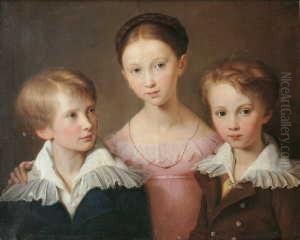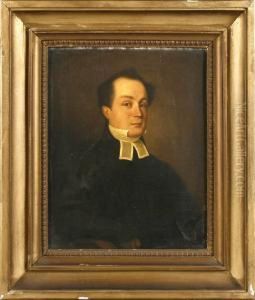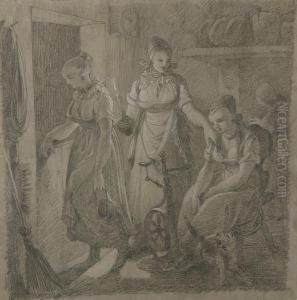Carl Wilhelm Tischbein Paintings
Carl Wilhelm Tischbein, also known as Wilhelm Tischbein or Goethe-Tischbein, was a notable German painter from the Tischbein family of artists. He was born on February 15, 1784, in Hamburg, Germany, into a family that had a strong artistic tradition. His uncle, Johann Heinrich Tischbein, known as 'the Kasseler', was a well-known painter, and his cousin, Johann Friedrich August Tischbein, was also a prominent artist. This environment provided the young Tischbein with exposure to the arts from an early age, and he received his initial artistic training from his family members.
Despite being less well-known than his uncle Johann Heinrich Tischbein, Carl Wilhelm developed his own artistic style. He is particularly remembered for his portraits and historical paintings. His works are characterized by the fine details and the clear influence of neoclassicism, which was the dominant artistic style of the period.
Tischbein spent a significant portion of his career in Italy, where he was influenced by the works of the Italian masters and the cultural atmosphere of the time. His time in Italy also allowed him to interact with other artists and intellectuals of the era, which further enriched his artistic development. One of his notable works includes a portrait of the famous German writer Johann Wolfgang von Goethe, which is why he is sometimes referred to as 'Goethe-Tischbein'. This portrait, depicting Goethe in the Roman Campagna, became one of the most iconic images of the writer and contributed to Tischbein's lasting fame.
Throughout his career, Carl Wilhelm Tischbein enjoyed various appointments and honors, reflecting his reputation as a respected artist of his time. He died on June 26, 1844, in Hamburg. His works continue to be appreciated for their contribution to German neoclassical painting, and they can be found in various art collections and museums around the world.



